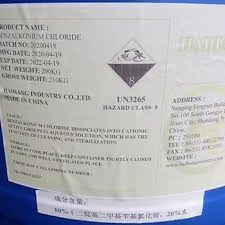coagulation and flocculation
Coagulation and Flocculation Essential Processes in Water Treatment
Coagulation and flocculation are critical processes in water treatment, serving as fundamental techniques for removing suspended solids and impurities from water. These processes are essential for producing clean water for drinking, industrial processes, and wastewater treatment, ensuring public health and environmental protection.
Understanding Coagulation
Coagulation is the initial step in the water treatment process. It involves the addition of chemicals, known as coagulants, to destabilize suspended particles in water. Common coagulants include aluminum sulfate (alum), iron(III) salts, and polyaluminum chloride. These substances work by neutralizing the negative charges on particles, allowing them to aggregate or clump together. The destabilization of these charged particles leads to the formation of larger, heavier aggregates known as flocs.
The coagulation process is influenced by several factors the nature of the coagulant, pH levels, the concentration of suspended solids, and temperature. Adjusting the pH is crucial, as it affects the solubility of the coagulant and the charge of the particles. For most coagulants, optimal pH levels range from 6.5 to 8.5. At this pH range, coagulants can effectively neutralize charges on particles, promoting floc formation.
The Flocculation Process
Following coagulation, flocculation is the next step, where gentle agitation is used to encourage the aggregation of the destabilized particles into larger flocs. This process typically involves slower mixing to allow the tiny particles to collide and stick together, forming more significant clusters. Flocculation time and intensity are carefully controlled to optimize the size of the flocs, which should ideally be large enough to settle out of the water during subsequent stages of treatment but not so large that they break apart.
Flocculation can be enhanced by adding polymers, known as flocculants, which bind the particles together more effectively. These can be organic or inorganic compounds and help increase the efficiency of the floc formation process. The use of flocculants can significantly improve the clarity of water and reduce the amount of residual suspended solids.
Benefits of Coagulation and Flocculation
coagulation and flocculation

The combined processes of coagulation and flocculation offer numerous advantages in water treatment. Firstly, they effectively remove a wide range of contaminants, including silt, clay, and microorganisms, thus improving the overall quality of water. This is particularly essential in areas where water sources are prone to high turbidity due to runoff or sedimentation.
Additionally, these processes are cost-effective and can be integrated into existing water treatment systems with relative ease
. Implementing coagulation and flocculation can lead to reduced reliance on additional treatment methods such as filtration or disinfection, ultimately lowering operational costs.Moreover, coagulation and flocculation contribute to the management of harmful algal blooms (HABs). By removing algal cells and associated toxins, these processes safeguard water resources, ensuring that communities are not exposed to health hazards.
Challenges and Considerations
Despite their advantages, several challenges must be addressed when implementing coagulation and flocculation processes. The selection of coagulants and flocculants requires careful consideration of the specific water qualities and types of contaminants present. Overdosing coagulants can lead to residual chemicals in the treated water, posing potential health risks.
Furthermore, maintaining optimal conditions for coagulation and flocculation, such as appropriate pH and temperature, is vital for the effectiveness of the processes. Continuous monitoring and adjustment are necessary to achieve the desired outcomes without compromising water quality.
Conclusion
Coagulation and flocculation are indispensable steps in water treatment that enhance the safety and quality of water. By effectively removing suspended solids and impurities, these processes play a vital role in protecting public health and the environment. As water treatment technology continues to evolve, ongoing research and development in coagulation and flocculation methods will further improve their efficiency and effectiveness, ensuring access to safe drinking water for all.
-
Pbtc Scale InhibitorPBTC: A Scale Protector for Industrial Water TreatmentNewsAug.05,2025
-
Organic Phosphonate: An Efficient Defender in the Field of Scale InhibitionNewsAug.05,2025
-
Hydrolyzed Polymaleic Anhydride: Green Pioneer in Scale Inhibition FieldNewsAug.05,2025
-
PAPEMP Polyamino Polyether Methylene Phosphonic Acid For SaleNewsAug.05,2025
-
Flocculant Water Treatment: A Pioneer in Purification in the Field of Water TreatmentNewsAug.05,2025
-
Benzyl Isothiazolinone: An Efficient and Broad-Spectrum Antibacterial Protective GuardNewsAug.05,2025





